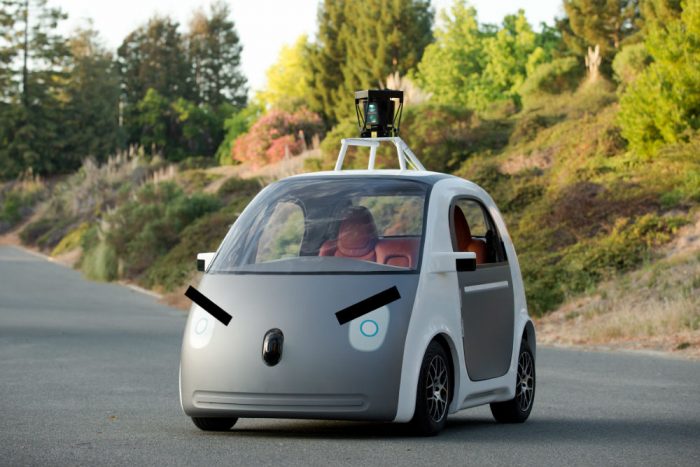Driverless cars may not be far from reality, and some of them might be covered with a hyper-sticky surface that traps pedestrians like bugs on flypaper — for their own good!

Google received a patent last week for a “flypaper, or double-sided duct tape”-like glue that would sit just beneath a breakable shell on its driverless automobiles – soon to be cruising through crosswalks in a town near you.
The concept is as follows: A driverless vehicle fails to sense your presence and smashes into you broadside, splaying you across the hood. The vehicle senses its error and abruptly stops, but instead of flying back into the street you stick firmly to the crumpled car’s body, thanks to Google’s patented oopsie-adhesive.
The idea behind the – and we can’t stress this enough – extremely unusual patent, first reported by the San Jose Mercury News, is to protect a significant cause of many pedestrian injuries after they’re struck by a car: being flung forward into the street.

That’s all well and good, and we commend Google for thinking outside the box, but the idea is bizarre. Maybe it could mitigate the biker and pedestrian fallout after impact, but we have to wonder; could this really work? Or is Google just patenting someone’s late night Ah-Ha! moment just in case?
Is it really preferable to remain on the vehicle after you’ve been hit? What if you’re stuck and being dragged along? What if the rogue Google car proceeds to plow into another car, carrying you with it?
Then there are the more common impracticalities – suddenly hail damage means the car could become a one-ton Velcro patch catching everything that falls on its exposed sticky membrane. And what about hitting a deer? Who’s supposed to peel Bambi off Google’s hood?
And of course, what happens when the car hits another car? It seems like this could redefine the term “pile-up.”
Lots of answers remain to be seen from this sticky new solution to car accidents, but we commend the super-tech on thinking of those of us who bike, walk, and run the city streets. If this catches on, human-car accidents may become a little safer — and a whole lot stickier — in the near future.







